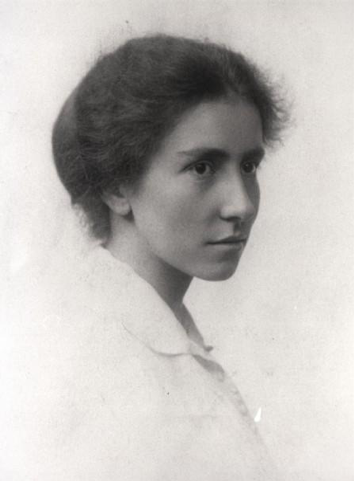Reseña
She was an archaeologist, professor at Cambridge University, in the United Kingdom, and carried out fieldwork in significant and relevant places like Gibraltar, southern England, Iraqi Kurdistan and Bulgaria. She excavated key sites like Kent’s cavern, Devil’s Tower, El Wad, Mugharet el-Emireh, Kebara, Skhul or Tabun. She was part of several institutions, for instance the British Academy, associations and commissions of inquiry. She also defined and coined technocomplexes like Chatelperronian, Gravettian, Natufian or Chreswellian.
Justificaciones
- She defined and coined the cultural phases of prehistory: Gravettian, Chatelperronian, Chreswellian and Natufian.
- She developed the usage of aerial photography in archaeology.
- First female professor at Cambridge University
Biografía
She was a British archaeologist specialising in the Palaeolithic period.
Born in Oxford, she enrolled for a diploma in archaeology in 1921 and then went to Paris to further her knowledge of prehistory. The summers of 1923 and 1924 were spent working on major excavations which gave her valuable experience. In 1924 he read his doctoral thesis at Oxford. During these early formative years Garrod worked closely with Nina Layard, one of Britain's foremost archaeologists. Layard's advanced excavation techniques (she was the first specialist to use three-dimensional recording techniques) probably set a stimulating example for Garrod.
Between November 1924 and December 1925, Dorothy Garrod undertook excavations in Gibraltar with resounding success. As a result of her excellent work, she received an award from the Amsterdam Institute of Anthropology in 1927.
She carried out excavations at important sites in Gibraltar, southern England, France, Palestine, Iraqi Kurdistan and Bulgaria. In 1928 he led an archaeological expedition to southern Kurdistan. In 1949 she found the bas-reliefs at Angles-sur-l'Anglin (Vienne) and excavated at the Kebara site in Israel. She worked with other important archaeologists: Suzanne de Saint-Mathurin and the palaeontologist Dorothea Bate. Her work has broadened the understanding of the sequence of prehistoric occupation, coining terms such as the Natufian culture (Uadi-en-Natuf site), chronologically situated between 11140 and 7845 BC.
From 1939 to 1952 she was a full-time lecturer in archaeology at Cambridge, with a short hiatus during the Second World War when she served in the Women's Auxiliary Air Force.
In 1952 Garrod, then aged 60, retired from teaching to continue her excavations and research in the Near East. From that time onwards he carried out his work in Lebanon, exploring interesting caves. The results he obtained between 1958 and 1963 were of enormous interest to palaeoanthropology.
La brújula verde, retrieved on 31/03/2022,
https://www.labrujulaverde.com/2020/02/como-una-arqueologa-descubrio-en-1928-la-cultura-natufiense-que-ya-fabricaba-pan-y-cerveza-antes-del-desarrollo-de-la-agricultura
Trowel Blazers, retrieved on 31/03/2022, http://trowelblazers.com/dorothy-garrod-2/
Mujeres con ciencia, retrieved on 31/03/2022,
https://mujeresconciencia.com/2014/09/22/dorothy-garrod-rememorando-una-innovadora-arqueologa/
Obras
The Upper Palaeolithic in the Light of Recent Discovery. Proceedings of the Prehistoric Society 4, 1-26 (1938).
Garrod, Dorothy Annie Elisabeth.; Bate, Dorothea Minola Alice. The Stone Age of Mt. Carmel vol. 1.Oxford: Claredon Press. (1937)
Bibliografía
Davies, W. (1999). “Dorothy Annie Elizabeth Garrod: A short Biography”. In Davis and Charles (eds.): Dorothy Garrod and The Progress of the Palaeolithic. Owbow books, pp. 1-14.
Enfoque Didáctico
In geography and history in 1st of ESO, studying prehistory, human evolution and especially Palaeolithic, Epipalaeolithic (Natufian) and Neolithic is very important. Also in Biology when human evolution is studied.
It is possible to work in Secondary Education for Adults, Module I Social.
Documentos
